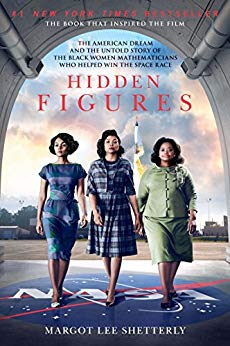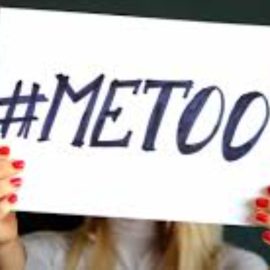
This article is an excerpt from the Shortform summary of "Hidden Figures" by Margot Lee Shetterly. Shortform has the world's best summaries of books you should be reading.
Like this article? Sign up for a free trial here .
How were Jim Crow segregation laws felt by the employees of NASA in the pre-Civil Rights era? How did the women of Hidden Figures work to enact change?
In Hidden Figures, not even the brilliant mathematicians at NASA were spared from Jim Crow segregation. In the middle of the segregated south, the women of Hidden Figures worked to solve the problems of space exploration, and spent their lives advocating for change both at and outside of NASA.
Jim Crow Laws in Hampton Roads, Virginia
Langley Memorial Aeronautical Laboratory was the site of NACA (now NASA) and was located in a town called Hampton Roads, Virginia. As progressive and forward-looking as Hampton Roads may have seemed at first glance to someone like Dorothy Vaughan, it was still a segregated city of the American South at the height of the Jim Crow segregation era. Black people and white people had separate entrances to get on buses, and blacks were expected to give up their seats to whites if the white section was filled. African-Americans who were caught sitting in white sections could be fined, arrested, or even dragged off the bus and beaten by police. These practices even extended to black soldiers in uniform. Indeed, segregation was powerfully entrenched in the nation’s historical experience and was an unmistakable feature of life wherever one traveled, especially in the South.
The injustice seemed all the more perverse during World War Two. Black Americans were being asked to fight and die to defeat genocidal Nazis in Europe, yet were simultaneously being told to accept a brutal and violent system of repression at home. The irony wasn’t lost on many. Black scholars like Altona Trent Johns noted the distressing similarities between the German treatment of Jews and southern whites’ treatment of their black fellow citizens, a theme that was echoed all throughout black civil society—in churches, the press, sororities and fraternities, and civic organizations. The question was clear: What are we fighting for? Victory in the war overseas had to be matched by victory over white supremacy at home. Jim Crow segregation was impossible to defend.
Legal Changes and Progress at NASA
Langley was a place where colleagues worked closely with one another (often literally close, thanks to the wartime hiring spree) and clerks and computers might rub shoulders with top aeronautics researchers. Yet, because of the color of their skin, the West Area Computers were largely excluded from this collegial atmosphere. Although Executive Order 8802 had mandated fair employment in the defense industry, Langley’s location in the Commonwealth of Virginia forced it to comply with that state’s Jim Crow segregation statutes.
This was symbolized most hurtfully by the sign on the table where they sat at the back of the cafeteria that read, “COLORED COMPUTERS.” Although they were ostensibly professionals on par with their colleagues at Langley, they were still treated as something less than equal.
A West Computing member named Miriam Mann began taking down the sign every day. Miriam’s rebellion was taking place in a much wider context. For the first time, cracks were beginning to show in the Jim Crow laws’ armor. Although the process was slow, the new migrants to Hampton Roads were helping to transform the racial politics of the region. Many of the incoming white NACA engineers were from New England and other, more liberal parts of the country. To them, the southern system of apartheid seemed strange at best, immoral and unjust at worst.
The local southern whites were often highly suspicious of the new government employees that had come into their communities during the war years. They castigated the newcomers as Californians, Yankees, and New York Jews, or “NACA nuts,” oddballs who were well-read, spoke with strange accents, and had condescending attitudes.
Some white Langley employees began openly defying southern segregationist practices and even local laws. Margery Hannah, who oversaw West Computing, made a point of inviting some of her black employees to social gatherings at her home. Robert Jones, a brilliant aeronautics engineer, went even further. One day, he saw white police officers harassing a black man and getting ready to beat him up. Jones shouted at them to leave the man alone, which landed Jones in jail for a night.
These were not minor acts of disobedience. In the context of the Jim Crow laws in the South, these were extraordinary displays of rebellion. Fundamentally, the new white Langley employees were pragmatists. While it would be overly simplistic to say that they were all uniformly egalitarian on the racial issue, they fundamentally cared more about their colleagues’ competence and professionalism than they did about their skin color. In their passionate and mission-focused work, they developed a rapport with their black colleagues. This would prove crucial to breaking down the barriers at the laboratory.
The Cold War and American Hypocrisy
While, as we’ve seen, the Cold War and the Red Scare gave new force to racist policies, they also contributed to the eventual breakdown of Jim Crow segregation. As the United States sought international allies in its fight against worldwide Soviet Communism, American policymakers began to realize that segregation at home had become a significant liability, one that made America’s self-proclaimed leadership of “the free world” look hypocritical. In fact, foreign leaders of color who visited the US were frequently banned from hotels and restaurants—stories that received much attention in the foreign press and that handed a significant propaganda coup to the Soviet Union.
The question became clear to many international observers: Why should an African or Asian country side with the US in the Cold War when the US supported Jim Crow segregation at home? The necessities of Cold War politics and the weight of international opinion started to make a real difference in US domestic policy. They were a major part of the impetus behind President Harry Truman’s 1947 executive order desegregating the military and a subsequent order making federal department heads “personally responsible” for rooting out discrimination in their departments.
Sitting In
Christine’s time at Hampton Institute came at an extraordinary time in the struggle for civil rights. While Katherine Johnson was mapping out the trajectory to launch a man into space and bring him back safely, four black college students in Greensboro, North Carolina were making a breakthrough of their own. They sat at the segregated lunch counter at the local Woolworth’s and refused to leave until they were served as equals. Word spread of this powerful display of nonviolent resistance to Jim Crow laws—soon, “sit-ins” were being staged all across the segregated public spaces of the South.
The struggle reached Christine’s doorstep when Hampton Institute became the first school in Virginia to organize a sit-in. She was drawn to the nascent activist movement and became a committed participant in its marches, protests, and voter registration drives. Despite the massive resistance of Southern whites and the state governments they controlled, the civil rights movement made progress.
In March 1961, President John F. Kennedy issued Executive Order 10925, ordering federal agencies and contractors to take “affirmative action” to ensure equal opportunity regardless of race, creed, color, or national origin. This meant that agencies (like NASA) had to create specific policies and guidelines that rooted out discrimination in their employment practices. President Kennedy had, with the stroke of a pen, put the resources of the federal government on the side of the civil rights movement.
Jim Crow segregation lasted for decades, and it was dismantled through activism by Black leaders and organizers. The women in Hidden Figures worked on tearing down these laws every day at work, and they were a part of the larger Civil Rights Movement.

———End of Preview———
Like what you just read? Read the rest of the world's best summary of Margot Lee Shetterly's "Hidden Figures" at Shortform .
Here's what you'll find in our full Hidden Figures summary :
- How brave black women were instrumental to the American space race
- How they confronted racism and sexism to forge a better future
- Their enduring legacy in American history






